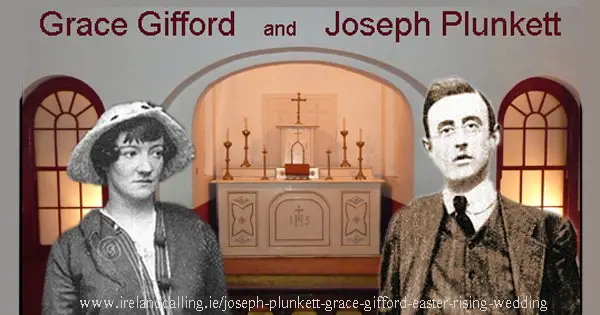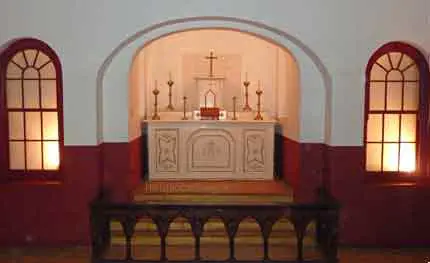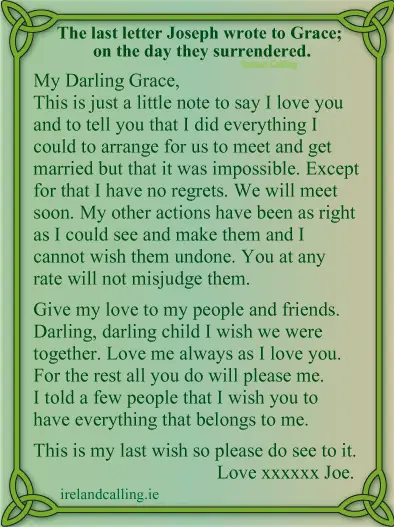Joseph Plunkett and Grace Gifford were introduced by mutual friends at a social event in Dublin in 1913. They immediately struck up a friendship which developed into love.
Plunkett proposed to her in 1915 and she accepted immediately.
She also decided to convert to Catholicism in time for their wedding which was planned for Easter Sunday 1916.

Those wedding plans had to be put on hold when Easter week was chosen for the Rising to overthrow British rule.
However, Plunkett promised that they would marry as soon as they possibly could, even if that meant marrying in jail if the rebellion failed and he was captured.
Plunkett’s health was failing as Rising began
Plunkett was one of the leaders stationed in the General Post Office when the rebellion began. He was ill at the time and couldn’t play much of active part.
His health was even more precarious when he was captured and taken to Kilmainham Jail after the rebellion was crushed.
Plunkett was one of the seven men who signed the Proclamation declaring a new Provisional Government of the Irish Republic. He knew as he signed it that it would lead to him being executed if the rebellion failed.
Plunkett sentenced to death by military court
Within days of the end of the Rising, as he always expected, Plunkett was sentenced to death by a military court.
There was no chance of a reprieve but the authorities did agree to let Plunkett marry Grace. The couple had to move quickly. Plunkett was due to be executed on 4th May.
Grace wasn’t made aware of this until late in the afternoon on 3rd of May.
There was no wedding ring so she approached a jeweller’s shop in Dublin city centre, just as the owner was about to close at 5pm. She begged him to stay open so she could choose a ring.
He relented when he heard her story.
Married in jail with soldiers as witnesses

Grace then went up to Kilmainham Jail on the outskirts of Dublin.
She arrived by mid-evening but was kept waiting until 1.30 in the morning before she was allowed into see Plunkett in the prison chapel.
There was no electricity so the service was conducted by the light of a single candle held by a British soldier.
No family or friends were allowed to attend so the two soldiers had to act as witnesses.
Twenty other soldiers lined the corridor with bayonets fixed, though it’s hard to imagine what kind of threat they thought the young couple could pose.
Allowed 10 minutes together after the marriage
Once the service was over, Plunkett was taken back to his cell. A few hours later, Grace was allowed to see him for the last time before he was executed.
The couple were allowed 10 minutes together as a group of soldiers stood guard and looked on.
Once the 10 minutes was up, Grace was told to leave. Plunkett was then taken out into the dreaded Stonebreaker’s yard at Kilmainham and shot dead by firing squad.
The is a transcript of the last letter Plunkett wrote to Grace Gifford.
It was written in his field notebook. He wrote this on 29 April 1916, the day they surrendered. They were married, and had just ten minutes together after the wedding.

Jim McCann performing the song, Grace- he gives a brief introduction to Grace Gifford and Joseph Plunkett.
Click below for more about Joseph Plunkett and Grace Gifford
Joseph Plunkett and Grace Gifford early life
Easter Rising interrupted couple’s wedding plans
Couple’s tragic story helped shape public opinion
More history articles
The Neolithics – first people to leave their mark on Ireland